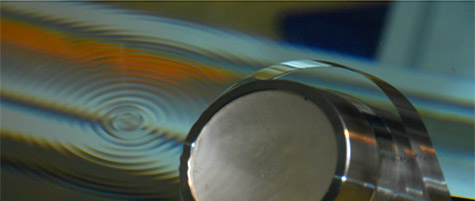UMS Software
Integrates with the XYZ Scanning Gantry and a modern oscilloscope.
Precision Acoustics UMS software is written in LabVIEW and meets the requirements of the latest IEC standard 62127-1 and NEMA UD-2 or measurement requirements of FDA 510(k) submission. It is regularly updated, as regulations change, and our staff can customise it for customers’ specific applications.
- Automatically aligns the hydrophone to the beam maximum.
- Includes software routines to ensure hydrophone is stationary before waveform is acquired.
- Can automatically conduct linear or planar scans in any combination of directions e.g. transaxial (x,z or y,z) and transverse (x,y) and the system is not restricted to any primary axis.
- Outputs data in “.txt” (ASCII) format for easy integration with other software packages.
- Automatically computes standard acoustic parameters, including full waveform deconvolution.
- Additional software will be included to automate the control of a customer-specified function generator to enable frequency scans.

Relevant Links
- UMS Tank Specification
- UMS Downloads
- UMS Software & Acoustic Parameters
UMS Acoustic Parameters
The UMS software has been used to make FDA 510(k) submissions. It calculates the following acoustic parameters at a single hydrophone position. This requires that a calibrated hydrophone be used and we can supply a calibrated needle or membrane hydrophone for this purpose. All calculations are carried out according to the relevant international standards.
| Acoustic Parameter | Description |
| pr | Peak rarefactional pressure |
| pc | Peak compressional pressure |
| pr.3 | Derated peak rarefactional pressure |
| pc.3 | Derated peak compressional pressure |
| Isppa | Spatial-peak pulse-average intensity |
| Isppa.3 | Derated spatial-peak pulse-average intensity |
| MI | Mechanical index |
| AWF | Acoustic working frequency |
| Depth | Distance to start of pulse |
| PD | Pulse duration |
| PII | Pulse-intensity integral |
| PII.3 | Derated pulse-intensity integral |
Other acoustic parameters can be derived from the above, including (but not restricted to) the following.
| Acoustic Parameter | Description |
| IOB (Output Beam intensity) | Power divided by beam width measured from planar or orthogonal cross scan |
| Focal volume | Combination of beam widths from transverse and axial scans |
| ISPTA (Spatial-peak temporal-average intensity) | For a single-element transducer, PII divided by pulse repetition interval |
| ERA (Effective radiating area) | The area close to the transducer through which most of the acoustic power passes |
| BNR (Beam non-uniformity ratio) | The ratio of the spatial-peak temporal-average intensity to the spatial-average intensity, averaged over the effective radiating area |
Contact us
If you would like more information, please get in touch by phone, email or enquiry form.
Alternatively complete our enquiry form below.
Telephone:
Email:
